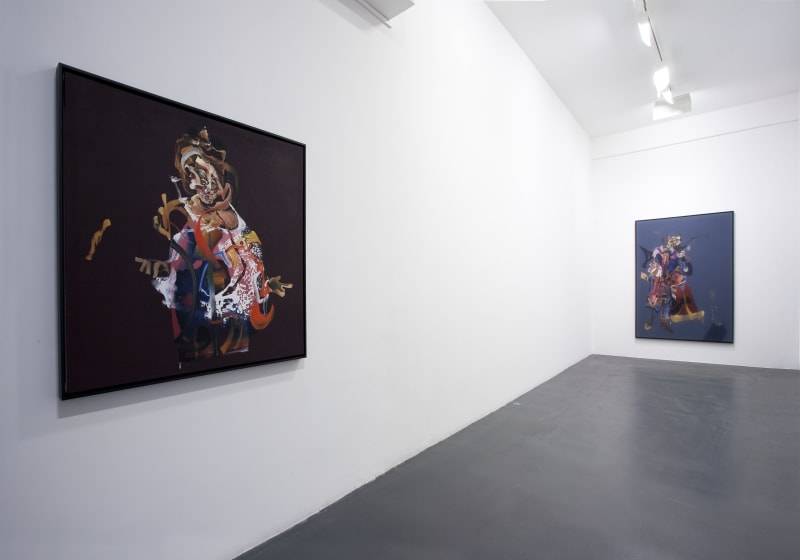Galerie Nathalie Obadia is delighted to announce Pieter Schoolwerth's first exhibition in France.
Born in St. Louis (Missouri) in 1970, a graduate of the California Institute of the Arts, Schoolwerth lives and works in New York. He has exhibited regularly since 1994, including two recent shows at Miguel Abreu Gallery in New York along with solo exhibitions at American Fine Arts in 2000 and 2001. His many group exhibitfions include "Offerings" and "Scratch Off" at Thread Waxing Space, New York, 1996; "Gothic," IAC, Boston, 1997; "Pop Surrealism," The Aldrich Museum of Contemporary Art, Ridgefield, Connecticut, 1998; "Festival Polyphonix," Centre Georges Pompidou, Paris, 2002; "Drawing Out of the Void," Vestry Arts, Inc., New York, 2004; "Tomorrow Land: CalArts in Moving Picture," Museum of Modern Art, New York, 2006.
The Paris show is the first full articulation of Schoolwerth's "Portraits of Paintings" series in which the artist further develops the exploration initiated in his "Z-axis Cycle," and avoids the typical pitfall of "critiquing" or "expressing himself" through painting. Classical paintings are the raw material behind each of the works in the exhibition.
The "Portraits of Paintings" series is allegorical in nature. In a sense, every picture stages the act of painting itself while it produces a figurative painting.
Miguel Abreu has given a clear definition of the work: "The process enacted to create every work in the series is identical, yet it is notably streamlined when compared to Schoolwerth's preceding efforts. Things begin by selecting primarily Dutch and Italian pictures from the 16th to the 19th centuries. Schoolwerth at first rigorously traces, and then overlaps the figures from the source image to form a new, single hybridized body. In what could be described as a reverse Cubist effect, in lieu of the articulation of one figure from multiple points of view, what emerges is one chimera-like mass from the superimposition and compression of several. The resulting imaginary 'figure' stands in as a depicted 'portrait of' the original group." Schoolwerth transforms the paintings of Ter Brugghen and Pieter Bruegel the Elder: "his new composition at once scrambles the adapted narrative and offers no singular body or subjectivity other than the one afforded by the material action of paint itself."
"What transpires is a kind of double movement: abstraction followed by re-presentation, or rather extraction and re-incarnation.
"In more general terms, all of the 'Portraits of Paintings' to date address the subject of making figurative paintings at a time when the physical body has become increasingly unstable in the world. Today's image of one's self exists as an amalgam of multiple, contiguous and competing images circulating instantaneously on the various screens of the digital realm. If our current experience of time and space is one of compression, superimposition, extrapolation and multiplication - all four characteristics owing to a certain order of abstraction - then the contemporary body might be considered a direct product of these forces.
"In a way, the pictorial operations in the 'Portraits of Paintings' methodically reflect, and even refract this pulverized state of things. What distinguishes Schoolwerth's project, however, what constitutes its element of resistance, lies in the final stages of the painting process, at the precise point when something akin to a new body appears, like a memorial to the flesh and blood body in flux. The delicate question then becomes that of the living Dead."
